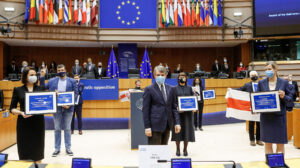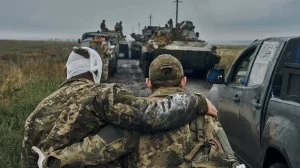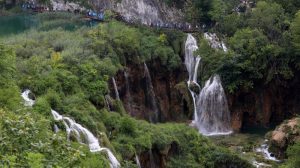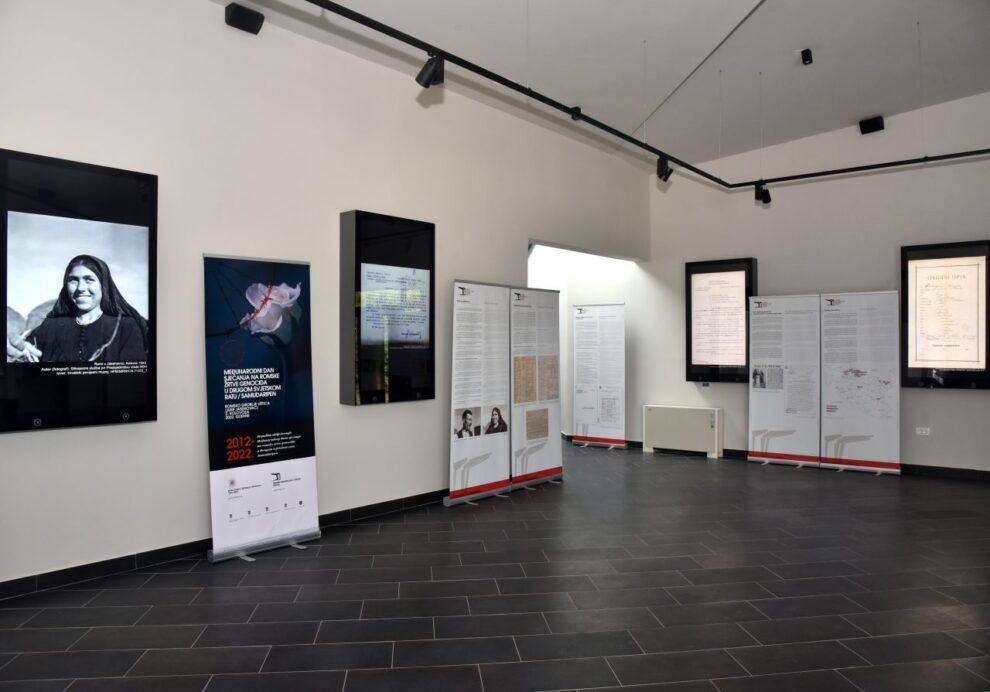Katarina Orsus didn’t talk much about how she survived World War II, sparing her granddaughter the unpleasant details.
While much of the story remains obscure, Lea Orsus remembers very vividly the emotions and the sadness that surfaced at her childhood home in a village in Medjimurje County in northern Croatia when the subject of Nazism was mentioned.
“My late grandmother was from the Roma settlement of Parag, she was sent to a camp together with her mother and sister. Medjimurje was not a part of Croatia at the time, but of Hungary, thanks to which they survived,” she said.
Orsus does not remember the name of the camp where her grandmother and great-grandmother were sent at the end of World War II, but she does remember the emotional impact that the experience had on them.
At camps like Jasenovac, run by the fascist Ustasa movement under the rule of the Nazi-allied Independent State of Croatia, NHD during wartime, thousands of Roma people like Orsus’s grandmother and great-grandmother were imprisoned or killed.
“There was an organised visit to Jasenovac for the commemoration one year, I remember that my grandmother went and she said that she too was interned in the camp. Grandma wanted to spare us the details, but I remember the sadness and silence. The details were never discussed,” Orsus recalled.
But sometimes her grandmother would recount stories about some of her wartime experiences.
“On summer evenings by the fire, my grandmother would tell us how they ran away from the police – she didn’t distinguish between the police and the army, the Roma language doesn’t distinguish between the police and the army,” Orsus said.
“She told us how they hid in the woods and what it was like when she was little. They always lived under some kind of persecution,” she added.
Even the end of World War II brought little respite, her grandmother told her. The Yugoslav Communist authorities also oppressed the Roma community, she said: “Beatings were not rare. The Roma in Medjimurje always lived in fear of the authorities.”
A community eradicated
Since 2014, Croatia has marked August 2 as Roma Holocaust Remembrance Day. The date commemorates the killing of around 3,000 Roma people by the Nazis at the Auschwitz concentration camp in 1944.
But the extent of the suffering of the Roma people in the Holocaust is still not yet fully documented and even an approximate number of those killed is not known.
In Croatia, the NDH adopted racial laws based on Nazi legislation in April 1941 which led to the targeting of Jews, Roma and others considered to be ‘non-Aryans’.
Detentions of Roma people then began in July 1941 and many were deported to the Jasenovac concentration camp. Thousands died there.
But the persecution of the Roma people under the NDH regime in Croatia has still not been fully investigated. One of the few historians who is dealing with the topic is Danijel Vojak of the Institute of Social Sciences Ivo Pilar in Zagreb.
“The Roma suffered in the entire area of south-east Europe, all the countries that were under some of the Nazi regimes were extremely repressive towards that population, but it is not incorrect to say that Croatia was at the forefront of this and to conclude that the quisling government, at that time the Independent State of Croatia led by Ante Pavelic, committed the worst crimes against the Roma in World War II,” says Vojak.
According to documentation at the Jasenovac Memorial Site, over 16,000 Roma were killed during the existence of the NDH, but the real number is much higher and still unknown.
Many who were detained did not even reach Jasenovac; they were killed on the spot, on the doorstep, on the street, on the road. “The Einsatzgruppen [Nazi SS death squads] committed the worst possible crimes imaginable,” said Vojak.
Within the four years of NDH rule from 1941 to 1945, the entire Roma population in the territory that it controlled was almost completely destroyed, according to Vojak.
“During the war there was no population census, in the first population census in 1948 after the war, only about 400 Roma were registered in the territory of the then Socialist Republic of Croatia – the entire community was wiped out,” he said, although he noted that some Roma concealed their ethnicity at the time because of fear.
However, while the NDH was in power, part of the north of Croatia, the Baranja and Medjimurje counties, belonged to Hungary, and the 400 surviving Roma were registered mainly in that area, which meant that there were almost no Roma left alive in the NDH’s territory.
Negation of suffering
Vojak said that after World War II, the Yugoslav Communist authorities under Josip Broz Tito established the National Crime Investigation Commission to collect evidence about wartime crimes, perpetrators and victims.
“But the ideological setting about ‘brotherhood and unity’ dictated that you must equalise everything, you must not emphasise the commemoration of just one [type of] victim [according to ethnicity],” he explained.
In this way, the Roma people’s suffering was glossed over by the Yugoslav regime – “I would call it negationism, because it is a denial of what happened to the Roma,” he said.
He cited a massacre in April 1945 in Hrastina, a village near the town of Zapresic, near Croatia’s border with Slovenia, when 43 Sinti people, a subgroup of Roma ethnicity who had fled to Croatia during the war, were killed by Croatian Ustasa troops.
The victims were later buried and registered as Jews, but it was only through subsequent historical research that it was determined that they were actually Roma.
“They escaped from Austria and Germany and came to the territory of the NDH, where they declared themselves to be Czechs. They had a travelling circus group that gave shows,” said Vojak.
“They were disbanded at the end of the war and some of them were located in the vicinity of Zapresic. [Ustasa troops] took the group to an abandoned property and raped the women and then slaughtered them,” he added.
Villagers buried the victims at the local cemetery in Marija Gorica, and after the war, local Partisans and the Jewish community registered them as Jews. In 1977, the Jewish community and the Union of Associations of Fighters of the National Liberation War, SUBNOR, also erected a monument.
“Until a few years ago, the prevailing opinion among the public and among historians was that the murdered were Jews. However, local historian Mario Simunkovic together with Djordje Mihovilovic [curator at the Jasenovac Memorial Centre], while researching camp inmates from the Zapresic area, found a reference to this case in an archive and then it was discovered that they were actually Roma,” Vojak explained.
The story of the massacre, and what Vojak called the “distortion of history” when it comes to the Roma people’s suffering during World War II in Croatia, illustrates how much remains unknown about the number of Roma people who were murdered and about the circumstances in which they perished, he concluded.
Source : Balkan Insight































